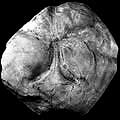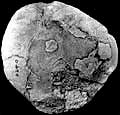The Echinoid Directory
Fernandezaster Sanchez Roig, 1952, p. 18
| Diagnostic Features |
|
|---|---|
| Distribution | Oligo-Miocene of the Caribbean. |
| Name gender | masculine |
| Type | Fernandezaster mortenseni Sanchez Roig, 1952, p. 18, by original designation. |
| Species Included |
|
| Classification and/or Status |
|
| Remarks |
|



